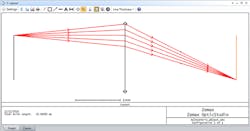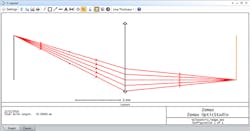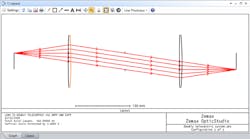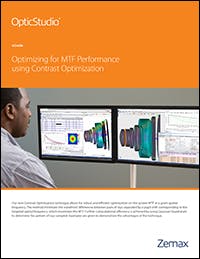Machine vision is the technology and process by which machines automatically inspect and analyze. It is used on pharmaceutical assembly lines; to inspect packaging; and for product or component assembly, tracking, process control, robot guidance, and much more. A key component of a machine vision system is its telecentric lens, which offers the best possible “vision” for the machine.
What is a telecentric lens?
Telecentric lenses are compound lenses with entrance or exit pupils at infinity; they’re designed to minimize perspective. Telecentric lenses can maintain constant magnification over a range of distances, which means that they can accurately measure 3D objects of varied heights.
Advantages of telecentric lenses
There are several advantages of telecentric lenses for machine vision systems. In general, they provide accurate measurements even when all objects are not on the same plane. The two key advantages include:
- Highest possible image accuracy due to a lower angular value
- Elimination of barrel and pincushion distortion so that the machine can “see” items in the foreground and background as the same size (large depth of field; zero angle field of view)
Types of telecentric lenses
Object-space: chief rays are parallel to the optical axis on the object side of the lens; entrance pupil at infinity (this is a paraxial representation)
Image-space: chief rays are parallel to the optical axis on the image side of the lens; exit pupil at infinity (this is a paraxial representation)
Bilateral: neither image or object affect magnification; both the entrance and exit pupils are at infinity
The importance of Modulation Transfer Function in telecentric lens design
Modulation Transfer Function (MTF) is one of the most important parameters by which image quality is measured and the performance of a telecentric lens is characterized. MTF describes the contrast of a spatial frequency in a scene: Images with high spatial frequency show finer detail and those with low spatial frequency show less detail.
Until now, the only way to optimize for the best MTF was to optimize directly on the MTF value, but this is computationally expensive, slow, and difficult to do—and it often fails.
To overcome these problems, Zemax developed an optimization theory called Contrast Optimization, which uses the Moore-Elliott method to target the best MTF response up to a desired spatial frequency. This method adds a new criterion, called Contrast, in the Optimization Wizard in OpticStudio. Building a Contrast merit function populates the software’s Merit Function Editor with MECS, MECT, MECA, MECX, and MECN operands. Contrast Optimization significantly reduces the amount of time it takes to design optical products with MTF specifications.
eGuide: Optimizing for MTF Performance using Contrast Optimization
Learn how the Contrast Optimization feature in OpticStudio simplifies the optimization parameter space to find the best possible design more quickly.





